VM.7 Add-on Modules
The following modules extend the basic functionality of the Facility Manager and Connection Manager or can be used as standalone applications.
VM.7 Add-on Modules
The following modules extend the basic functionality of the Facility Manager and Connection Manager or can be used as standalone applications.
VM.7 Service Planning Manager (SPM)
The Service Planning Manager (SPM.7) is used to manage appointments and tasks related to maintenance, inspections, repairs, and fault management throughout the entire lifecycle of a building and its systems.
VM.7 Service Planning Manager
The Service Planning Manager (SPM.7) is used to manage appointments and tasks related to maintenance, inspections, repairs, and fault management throughout the entire lifecycle of a building and its systems.
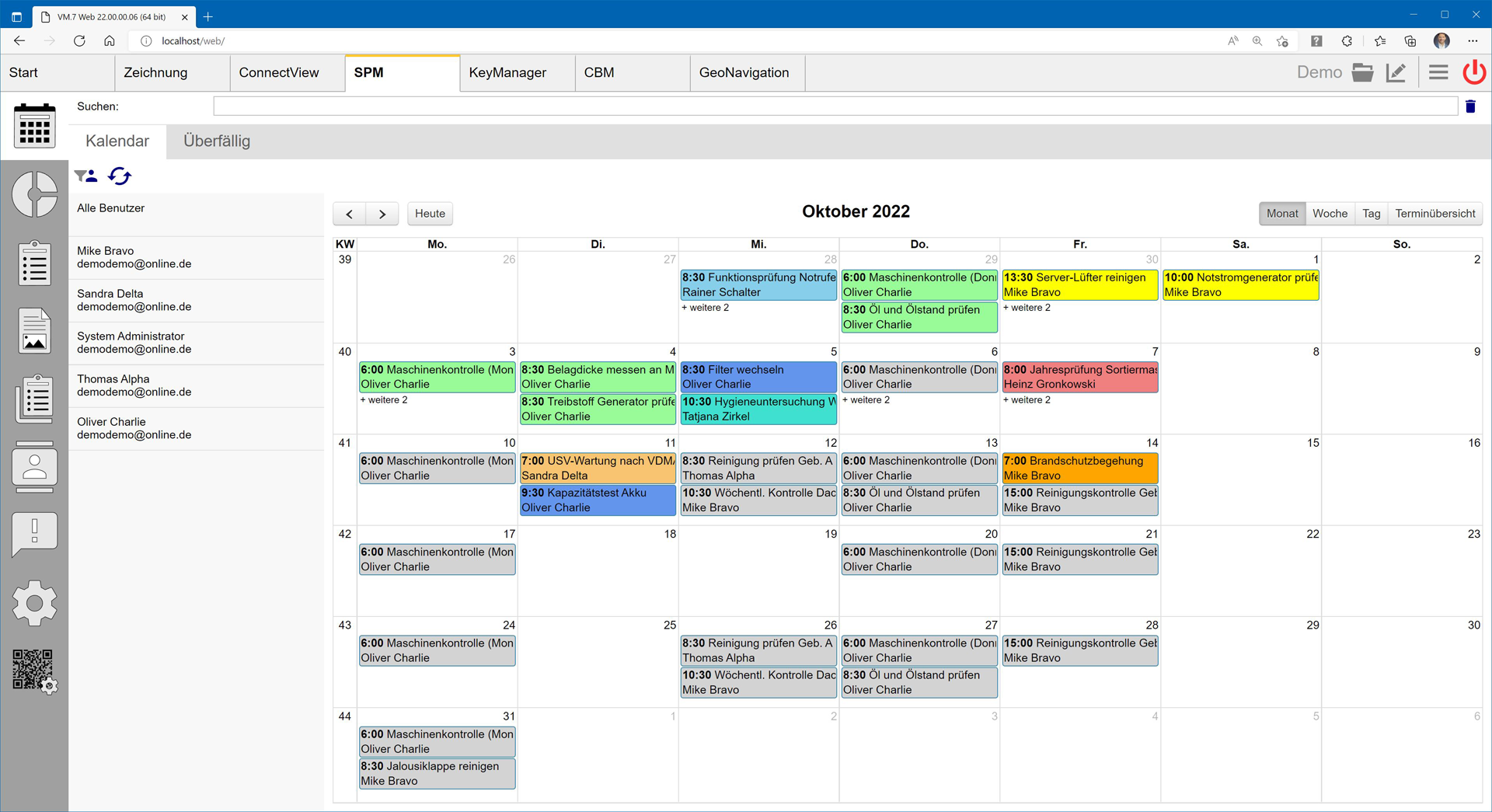
Object Management
In the standalone version, technical systems, components, and objects can be managed as pure database objects (without graphical representation). Hierarchical mapping of assemblies and components of systems is supported to any level of detail. The attributes of master data are individually configurable for each system type. In the version integrated with the VM.7 Facility Manager, it is also possible to locate all systems and devices on floor plans.
Task Libraries
The task library in SPM serves as a collection of templates for tasks and their individual activities. Libraries from external providers, such as VDMA, VDI, and AMEV, can be easily integrated via import. Access to the REG-IS® information database is also possible directly from SPM (provided a REG-IS® account is licensed). Libraries can be expanded at any time to include internal company regulations and custom task templates.
When creating new tasks, a library task can always be selected as a template instead of manual entry.
Object Management
In the standalone version, technical systems, components, and objects can be managed as pure database objects (without graphical representation). Hierarchical mapping of assemblies and components of systems is supported to any level of detail. The attributes of master data are individually configurable for each system type. In the version integrated with the VM.7 Facility Manager, it is also possible to locate all systems and devices on floor plans.
Task Libraries
The task library in SPM serves as a collection of templates for tasks and their individual activities. Libraries from external providers, such as VDMA, VDI, and AMEV, can be easily integrated via import. Access to the REG-IS® information database is also possible directly from SPM (provided a REG-IS® account is licensed). Libraries can be expanded at any time to include internal company regulations and custom task templates.
When creating new tasks, a library task can always be selected as a template instead of manual entry.
Tasks and Appointments
The Service Planning Manager revolves around tasks and their associated appointments. Tasks can be one-time jobs or recurring measures. Each task includes a list of activities that must be completed to fulfill the task. The task is linked to the systems, devices, or components on which the task is to be performed. For example, a fire safety inspection or a DGUV3 test is just a single task in the calendar, but its individual activities are performed on a large number of objects.
Tasks are assigned by a coordinator to a performer. As a rule, a configurable notification of the assignment is sent by email, also to external service providers. The coordinator can add any documents to the task that are helpful or necessary for carrying out the task.
A task can be created either manually or from a library template. Tickets and feedback from SPM Check can also be converted into tasks. For structuring purposes, tasks are organized into different types, whose calendar entry is displayed in configurable colors for better clarity, so that a visual distinction can be quickly made between, for example, inspection, maintenance, or repair.
Contracts and Documents
Contracts and any other document types can be linked to any recorded objects. Optionally, the user can create a reminder appointment and be notified of the upcoming contract end in the SPM calendar.
In addition to the standard document types, such as contracts, certificates, operating instructions, regulations, etc., further types with additional attributes can be created at any time. The documents only need to be created once, either in the database or as a reference to an external storage location, but can then be assigned to the systems and objects as well as the tasks as often as required.
The AT+C ObjectManager enables the display of CAFM objects in an individually configurable hierarchical tree structure without graphical support. In addition to calling up and editing master data, the ObjectManager supports moves via drag & drop as well as the creation of new objects in the selected structural level.
Any data objects, e.g. buildings, rooms, inventory or cables, can also be subsequently provided with graphical representations, so that a successive addition is possible depending on the availability of plans.
Tasks and Appointments
The Service Planning Manager revolves around tasks and their associated appointments. Tasks can be one-time jobs or recurring measures. Each task includes a list of activities that must be completed to fulfill the task. The task is linked to the systems, devices, or components on which the task is to be performed. For example, a fire safety inspection or a DGUV3 test is just a single task in the calendar, but its individual activities are performed on a large number of objects.
Tasks are assigned by a coordinator to a performer. As a rule, a configurable notification of the assignment is sent by email, also to external service providers. The coordinator can add any documents to the task that are helpful or necessary for carrying out the task.
A task can be created either manually or from a library template. Tickets and feedback from SPM Check can also be converted into tasks. For structuring purposes, tasks are organized into different types, whose calendar entry is displayed in configurable colors for better clarity, so that a visual distinction can be quickly made between, for example, inspection, maintenance, or repair.
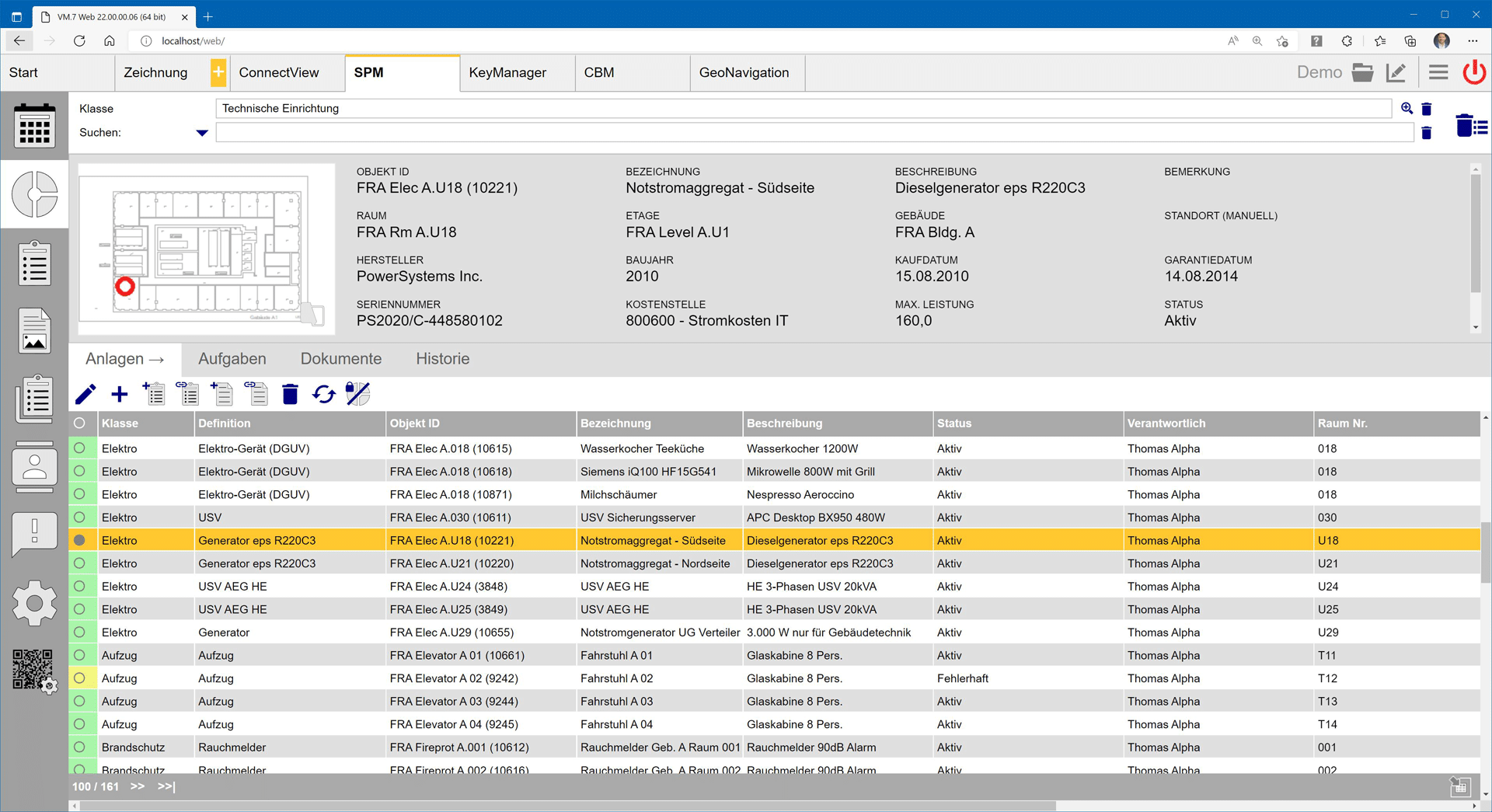
Contracts and Documents
Contracts and any other document types can be linked to any recorded objects. Optionally, the user can create a reminder appointment and be notified of the upcoming contract end in the SPM calendar.
In addition to the standard document types, such as contracts, certificates, operating instructions, regulations, etc., further types with additional attributes can be created at any time. The documents only need to be created once, either in the database or as a reference to an external storage location, but can then be assigned to the systems and objects as well as the tasks as often as required.
The AT+C ObjectManager enables the display of CAFM objects in an individually configurable hierarchical tree structure without graphical support. In addition to calling up and editing master data, the ObjectManager supports moves via drag & drop as well as the creation of new objects in the selected structural level.
Any data objects, e.g. buildings, rooms, inventory or cables, can also be subsequently provided with graphical representations, so that a successive addition is possible depending on the availability of plans.
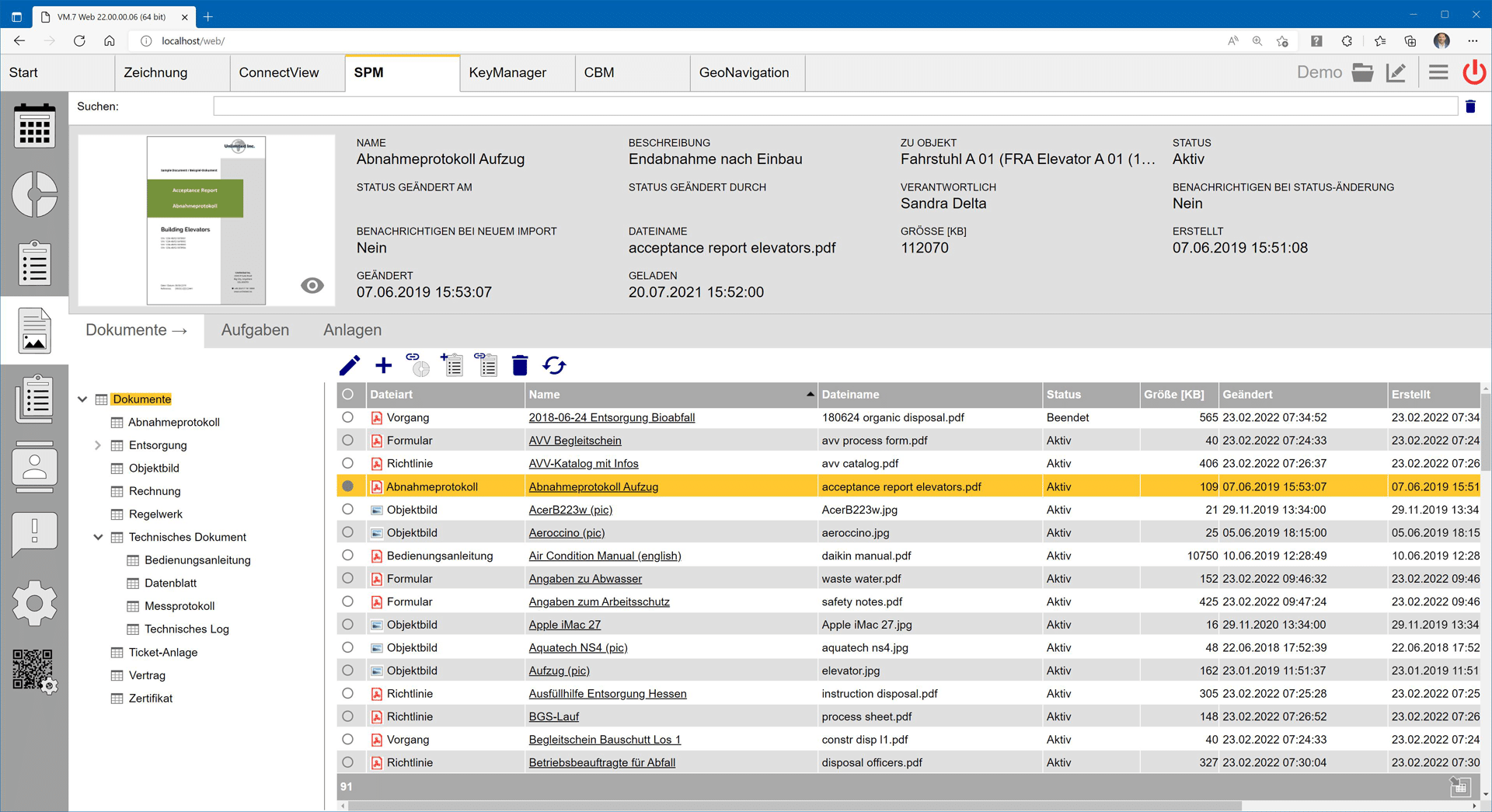
Gallery
Object Management
Tasks and Appointments
Contracts and Documents
Libraries
SPM Workorder
SPM offers mobile support for the execution and documentation of tasks on smartphones and tablets. The web-based interface is available for all operating systems (iOS, Android, Windows, ChromeOS, Linux, etc.), is touch-sensitive, and optimized for mobile use by automatically adapting to screen size and orientation (responsive design).
The software architecture allows the server for SPM Workorder to be operated separately from the other VM.7 server applications, in order to secure it specifically and release it specifically for access from outside. External service providers can thus be directly integrated into the fully digital execution documentation, in which every single activity step is registered with a time stamp. Pictures can be attached to the orders and signatures can be made directly on the mobile device.
SPM Workorder
SPM offers mobile support for the execution and documentation of tasks on smartphones and tablets. The web-based interface is available for all operating systems (iOS, Android, Windows, ChromeOS, Linux, etc.), is touch-sensitive, and optimized for mobile use by automatically adapting to screen size and orientation (responsive design).
The software architecture allows the server for SPM Workorder to be operated separately from the other VM.7 server applications, in order to secure it specifically and release it specifically for access from outside. External service providers can thus be directly integrated into the fully digital execution documentation, in which every single activity step is registered with a time stamp. Pictures can be attached to the orders and signatures can be made directly on the mobile device.
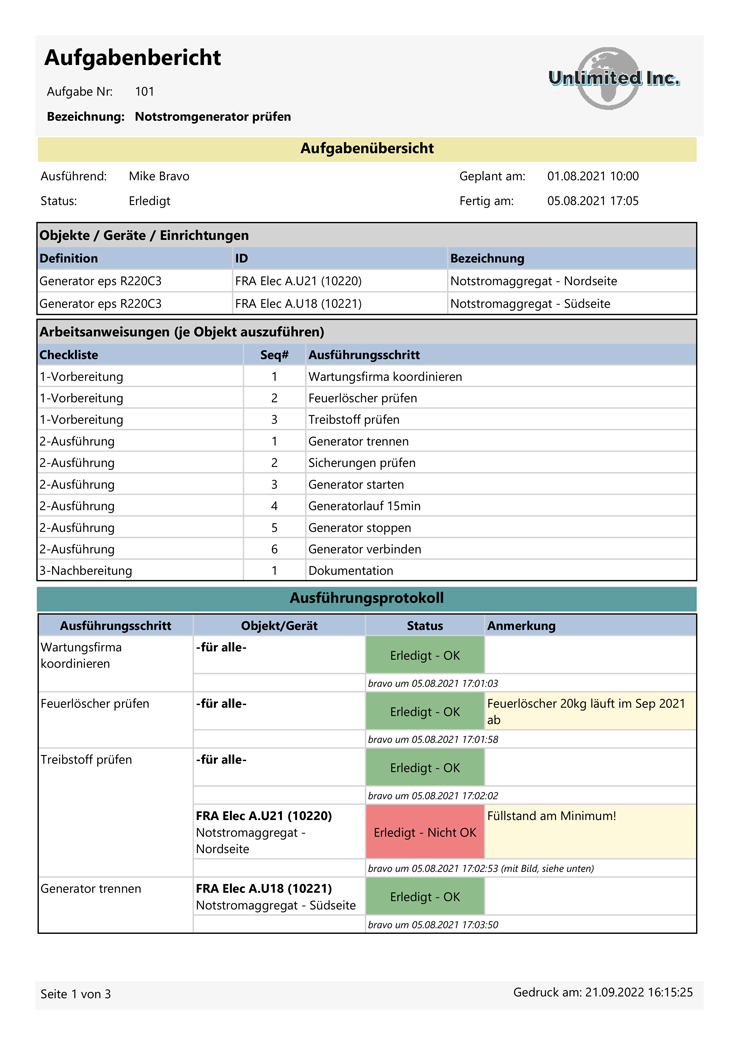
SPM Ticket
The ticketing system included in SPM enables the entry and management of fault reports via the intranet. When a fault report is recorded via the user-friendly web portal, a ticket is generated, which is displayed to the dispatcher. The dispatcher has three options for further processing the ticket:
By connecting with the task, the ticket now "inherits" the status information of the associated task, which is always displayed to the reporter of the fault in the ticket portal, so that a continuous flow of information is guaranteed.
SPM Ticket
The ticketing system included in SPM enables the entry and management of fault reports via the intranet. When a fault report is recorded via the user-friendly web portal, a ticket is generated, which is displayed to the dispatcher. The dispatcher has three options for further processing the ticket:
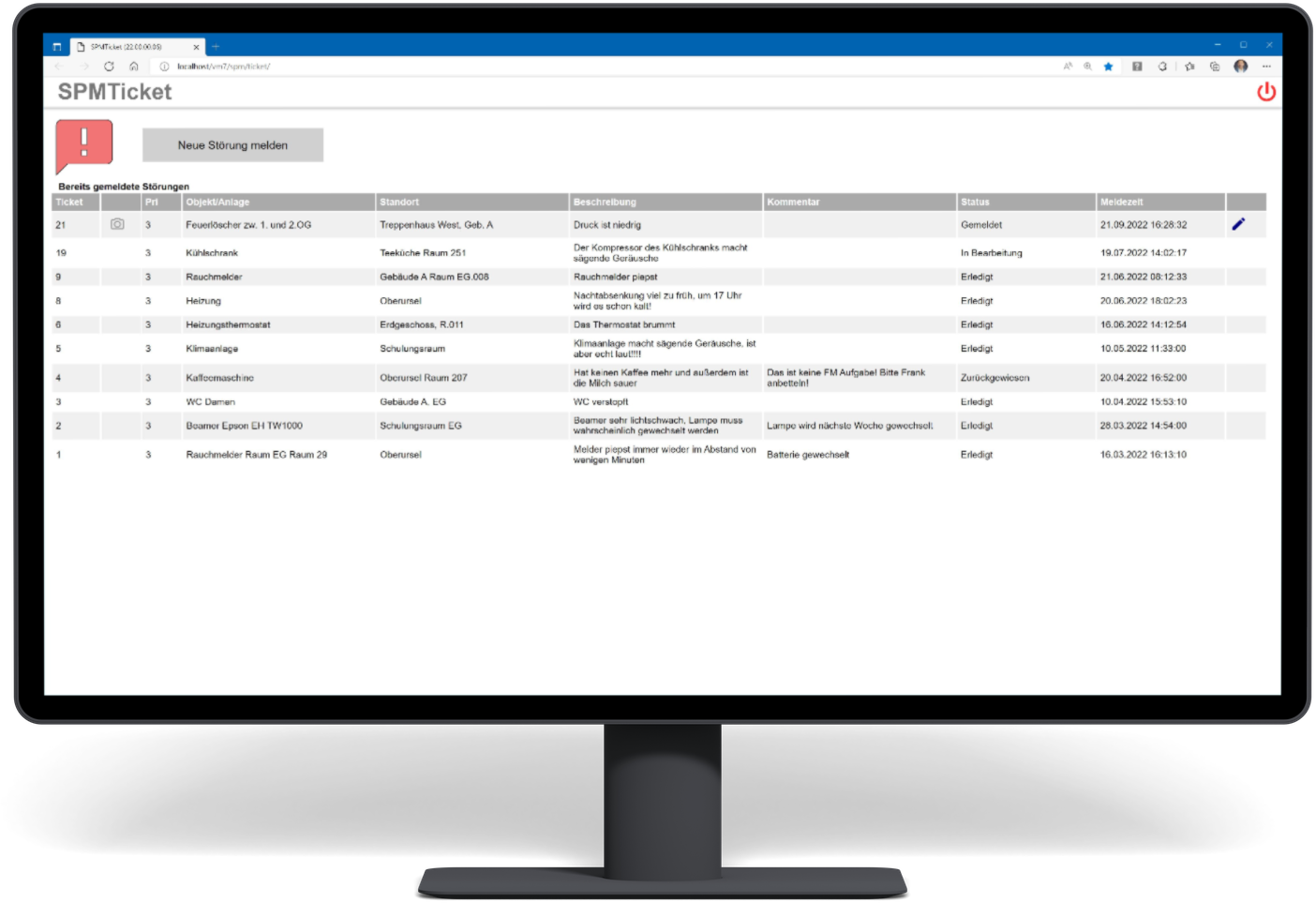
By connecting with the task, the ticket now "inherits" the status information of the associated task, which is always displayed to the reporter of the fault in the ticket portal, so that a continuous flow of information is guaranteed.
SPM Check
The mobile app SPM Check can be used on all operating systems (iOS, Android, Windows, Linux) for recording completed activities and reporting faults. It also works offline without a network connection! With it, you can (if there is still a connection) load a selection of objects into the offline database, for which activities can be reported as completed and further status information can be reported. These feedbacks can include pictures taken with the mobile phone camera as well as comments. Objects can also be identified via QR or bar code using the mobile phone camera.
When a network connection is restored after the offline inspection, the back synchronization to the central VM.7 database can take place. For certain activities or status codes, tickets are then automatically created, all actions are stored as completed tasks.
SPM Check
The mobile app SPM Check can be used on all operating systems (iOS, Android, Windows, Linux) for recording completed activities and reporting faults. It also works offline without a network connection! With it, you can (if there is still a connection) load a selection of objects into the offline database, for which activities can be reported as completed and further status information can be reported. These feedbacks can include pictures taken with the mobile phone camera as well as comments. Objects can also be identified via QR or bar code using the mobile phone camera.
When a network connection is restored after the offline inspection, the back synchronization to the central VM.7 database can take place. For certain activities or status codes, tickets are then automatically created, all actions are stored as completed tasks.
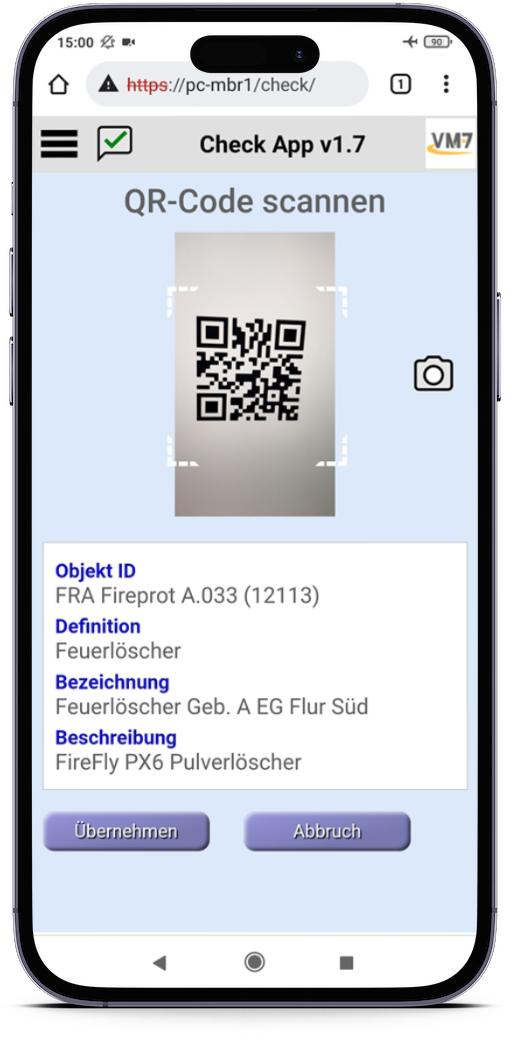
VM.7 Room and Resource Reservations
Whether meeting room, flexible workplace, catering, pool vehicle, or special tool, with VM.7 Bookings you can completely digitally map the entire process from request to billing. Depending on the reservation object or total costs, you can store thresholds for approvals if a booking should not take place directly. Issue and returns are also supported and logged with digital confirmations. The web operation has a tailor-made, intuitive interface for each role.
VM.7 Room Reservations
Whether meeting room, flexible workplace, catering, pool vehicle, or special tool, with VM.7 Bookings you can completely digitally map the entire process from request to billing. Depending on the reservation object or total costs, you can store thresholds for approvals if a booking should not take place directly. Issue and returns are also supported and logged with digital confirmations. The web operation has a tailor-made, intuitive interface for each role.
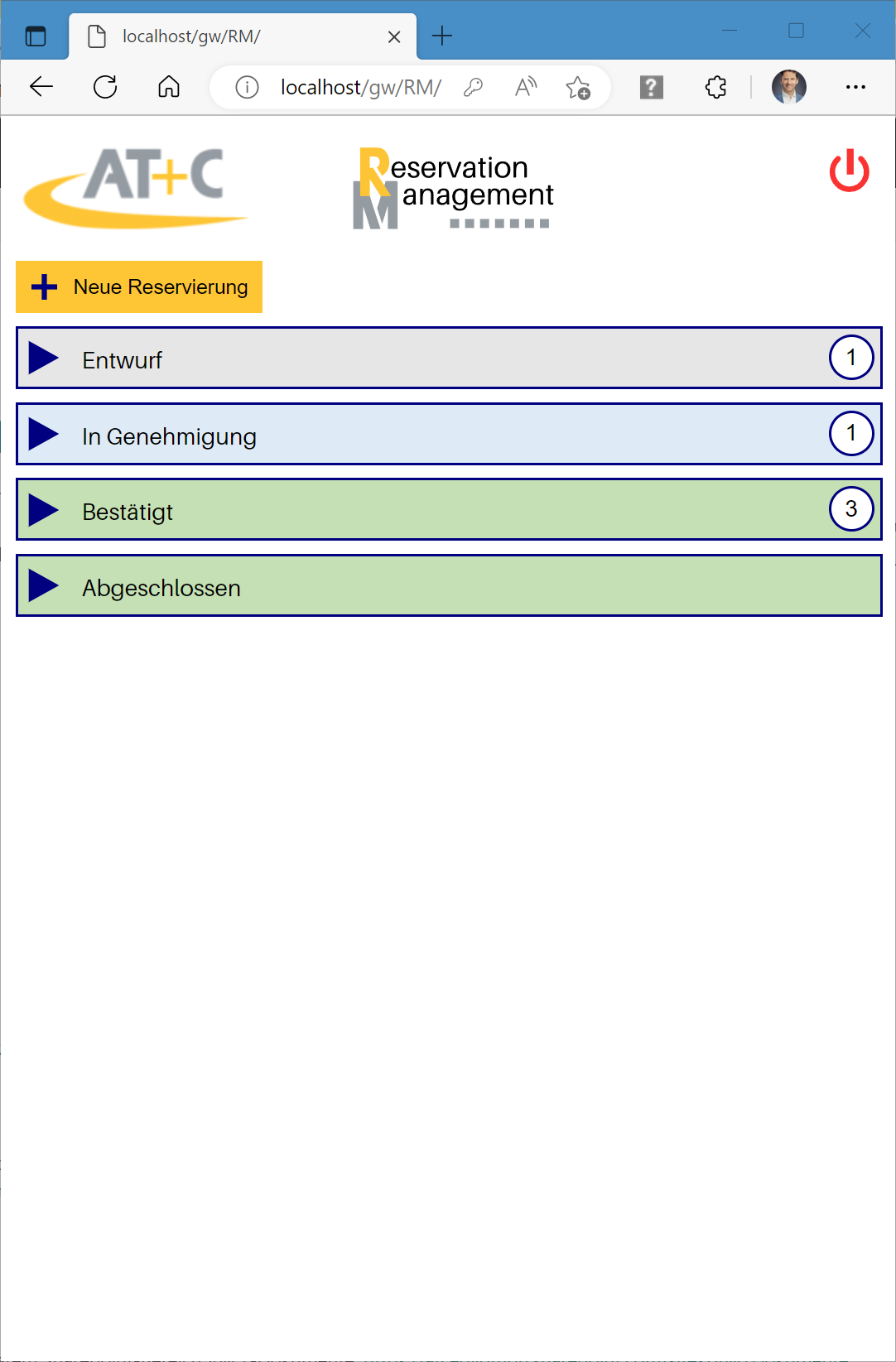
VM.7 Cost and Budget Management
The Cost & Budget Management (CBM) module supports cost control and adherence to budget targets.
The main functions at a glance:
VM.7 Cost & Budgetmanagement
The Cost & Budget Management (CBM) module supports cost control and adherence to budget targets.
The main functions at a glance:
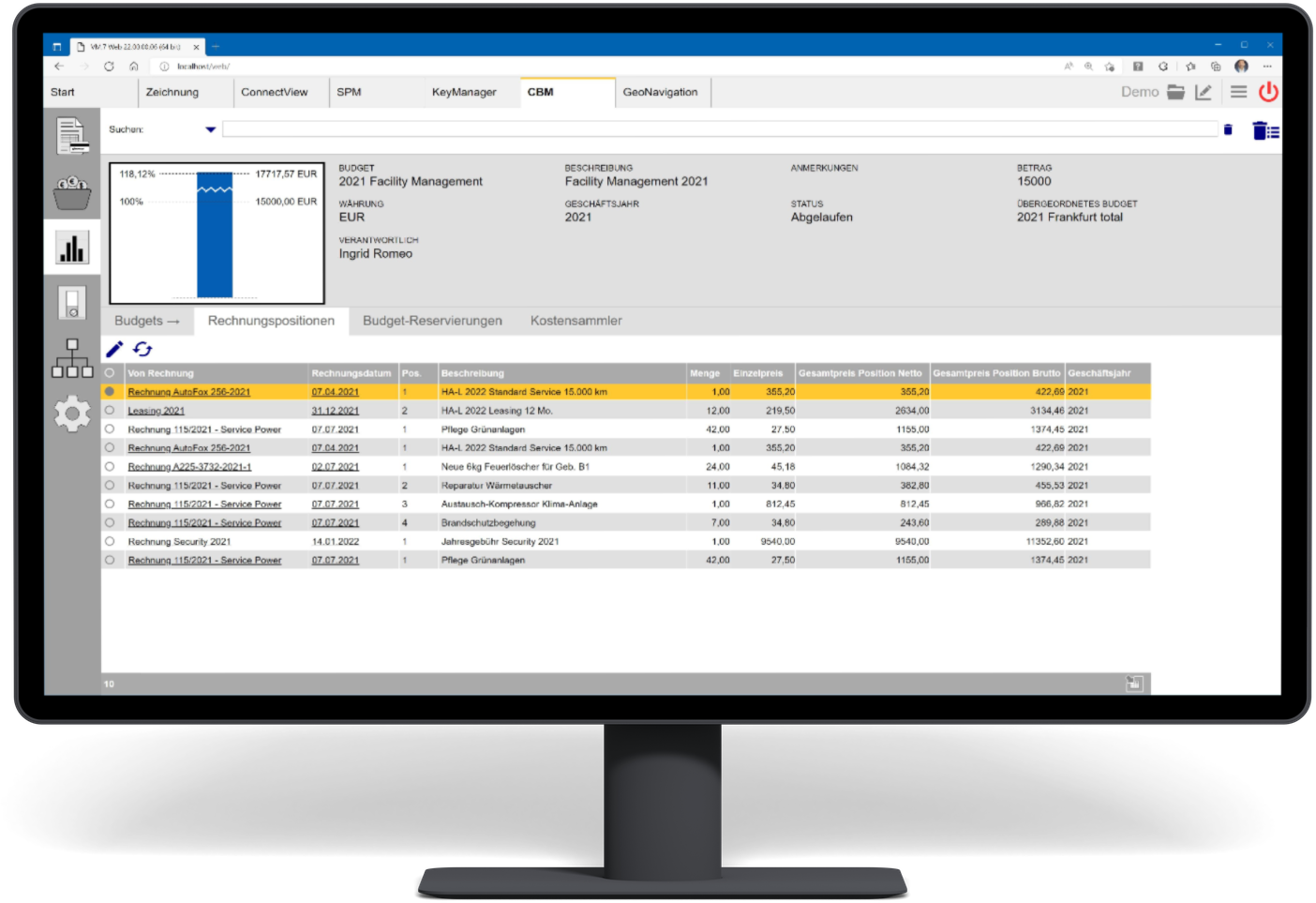
VM.7 KeyManager
Access to premises and other lockable facilities is a security-critical element. Managing the keys or media that enable the opening of doors or other access systems is indispensable. Due to the complexity of mostly grown over years, different locking systems, it is almost impossible in larger organizations without software support to keep track. The VM.7 KeyManager module ensures secure processes and a constantly up-to-date documentation of all access authorizations in connection with mechanical or electronic locking systems.
The central functions of key management are:
VM.7 KeyManager
Access to premises and other lockable facilities is a security-critical element. Managing the keys or media that enable the opening of doors or other access systems is indispensable. Due to the complexity of mostly grown over years, different locking systems, it is almost impossible in larger organizations without software support to keep track. The VM.7 KeyManager module ensures secure processes and a constantly up-to-date documentation of all access authorizations in connection with mechanical or electronic locking systems.
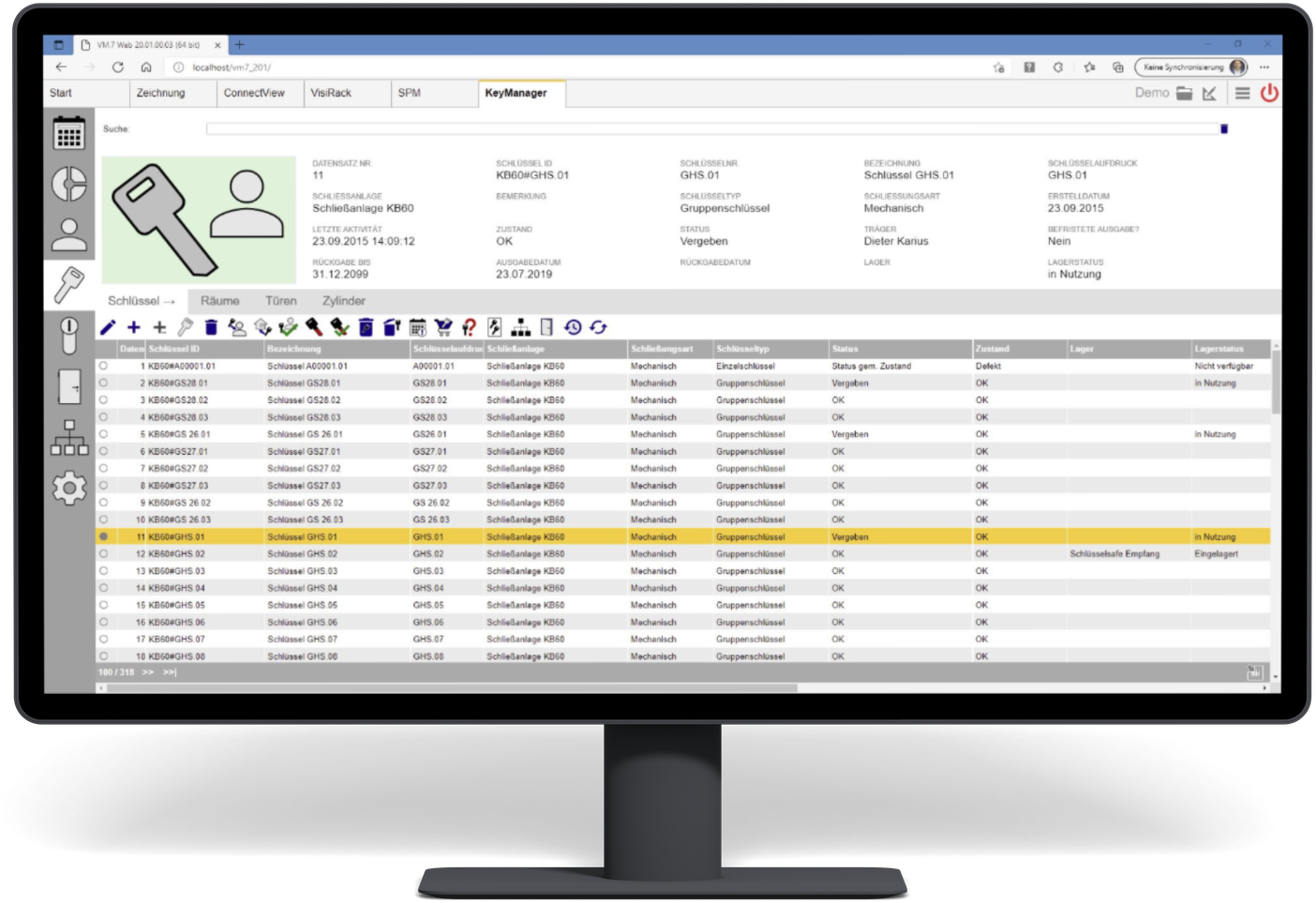
The central functions of key management are:
VM.7 Extensions
A major strength of the AT+C VM.7 solution platform is the ease with which it can be extended with additional function modules. The following functions are just examples of extensions that our consulting team can provide to customers within a few days using standard administration tools based on templates. All extensions are fully upgradeable.
General procedure for extensions:
An advantage of these extensions is that they are not separately licensed. Users only need a VM.7 basic license.
Gallery
Waste Disposal
Green Space Management
Tree Register
Vehicle Fleet Management
License Management
Energy Controlling
VM.7 Extensions
A major strength of the AT+C VM.7 solution platform is the ease with which it can be extended with additional function modules. The following functions are just examples of extensions that our consulting team can provide to customers within a few days using standard administration tools based on templates. All extensions are fully upgradeable.
General procedure for extensions:
An advantage of these extensions is that they are not separately licensed. Users only need a VM.7 basic license.
Hyperraum Access Management
AT+C has a 35+ year track record of developing innovative solutions. We fully expect that to continue for many years to come, and we're already thinking several steps ahead. We anticipate that neither bureaucracy nor the spirit of exploration will reach a natural limit in the future. An application for approving travel across multiple Einstein-Rosen bridges (wormholes) will likely be indispensable in a few hundred years. We expect to be ready to provide software to assist in such a venture!



